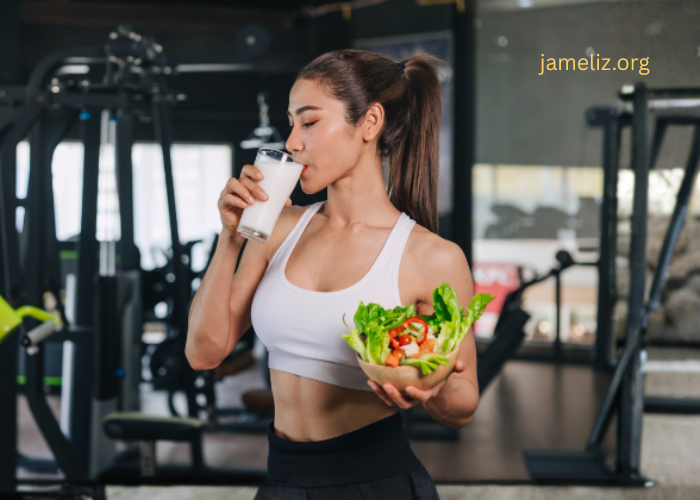The world of fitness continues to evolve as new research and innovations reshape how we train, recover, and maintain long-term health. Fitness science is revealing new insights about the body’s response to exercise, while technology is making it easier to apply these lessons in daily life. Here is a comprehensive look at the latest developments in fitness science along with practical guidance by cheerplex mega jackpot prediction for anyone seeking to build a smarter and more sustainable workout routine.
Advances in Exercise Science
Recent studies in exercise physiology show that small adjustments to training intensity and recovery can significantly improve performance. One major finding involves the concept of “zone two” training, which focuses on maintaining a moderate heart rate that allows for sustained effort without exhaustion. Scientists have found that this range improves cardiovascular efficiency and increases fat metabolism more effectively than high-intensity training done too often.
Another area of growing interest is muscle adaptation through variable resistance. This method uses tools like resistance bands or cable systems that change the level of resistance throughout each movement. Research suggests that this creates better muscle engagement and reduces joint stress compared to traditional free weights.
Practical guidance: Use moderate-intensity workouts three to four times a week for endurance and fat-burning benefits. Combine resistance band exercises with bodyweight moves to reduce injury risk and improve overall strength.
The Science of Recovery
Modern fitness research emphasizes that rest and recovery are just as important as the workout itself. Muscle tissue repairs and strengthens during recovery, not during the workout. Scientists now understand that chronic fatigue or soreness is often a sign of poor recovery habits rather than overtraining alone.
Sleep plays a crucial role in this process. Studies show that athletes who sleep less than seven hours per night experience slower muscle recovery, reduced strength gains, and higher injury risk. Proper nutrition also supports recovery by replenishing glycogen and providing amino acids needed for tissue repair.
Practical guidance: Aim for seven to nine hours of quality sleep every night. Include protein-rich meals after exercise, and stay hydrated to aid muscle repair. Add gentle stretching, mobility sessions, or yoga on rest days to keep the body flexible and balanced.
Cognitive Benefits of Regular Exercise
Exercise science continues to highlight how physical activity supports brain health. Researchers have discovered that consistent movement increases blood flow to the brain, stimulating growth factors that enhance memory and concentration. Even short ten-minute walks can activate areas linked to creativity and focus.
Furthermore, strength training has been shown to slow down age-related cognitive decline by improving metabolic and hormonal balance. Physical exercise also releases endorphins, which naturally elevate mood and help manage stress and anxiety.
Practical guidance: Schedule brief movement breaks during your workday. If you spend long hours sitting, take a walk or do a few stretches every hour. Mix aerobic exercises such as brisk walking or cycling with two strength-training sessions per week for both body and brain benefits.
Nutrition and Exercise Science
Nutrition remains a cornerstone of effective fitness, but science continues to refine what that means. The traditional idea of calorie counting is being replaced with a focus on nutrient timing and food quality. Consuming carbohydrates and proteins after workouts helps in mymusclevideo muscles refuel and repair more efficiently.
New research also explores the role of the gut microbiome in exercise performance. A healthy gut can improve energy levels and reduce inflammation, while poor gut health may increase fatigue. Eating a variety of fiber-rich fruits, vegetables, and fermented foods supports this internal balance.
Practical guidance: Prioritize whole foods and balanced meals rather than strict calorie limits. Eat within an hour after finishing a workout, focusing on lean protein, healthy fats, and complex carbohydrates. Stay consistent with hydration throughout the day instead of drinking large amounts only during workouts.
Mental Health and Exercise Science
Fitness is not just physical; it has powerful effects on emotional well-being. Recent studies confirm that exercise can be as effective as therapy or medication for mild depression and anxiety. This happens because physical activity triggers endorphins and serotonin, which help regulate mood.
Mind-body exercises like yoga, tai chi, and meditation are gaining renewed scientific support. They combine movement with mindfulness, improving both mental focus and emotional balance. This form of integrated training helps reduce stress hormones and enhances overall resilience.
Practical guidance: Choose activities that make you feel good rather than only those that burn calories. Include mindfulness practices in your routine, such as deep breathing before workouts or relaxation stretches afterward.
The Role of Technology in Modern Fitness
The rise of wearable technology has transformed how people train. Smartwatches, heart-rate monitors, and motion sensors provide real-time feedback on performance and recovery. New algorithms analyze sleep quality, stress levels, and daily movement to recommend more personalized workout plans.
Fitness apps are also incorporating artificial intelligence to tailor programs according to an individual’s progress. These tools help users stay consistent and adjust intensity automatically, reducing the risk of burnout. The future of home fitness will likely merge data tracking with virtual coaching to make personalized guidance available to everyone.
Practical guidance: Use technology as a tool, not as a distraction. Track your workouts and recovery to identify patterns, but rely on how you feel physically and mentally when adjusting your plan. Combine app-based workouts with outdoor activities to keep training enjoyable.
Age-Specific Fitness Science
Fitness research is also becoming more age-focused. Studies show that exercise needs change significantly between different life stages. Younger adults benefit from strength and endurance training, while older adults need more mobility and balance work to maintain independence.
Resistance training is particularly important for aging populations because it helps preserve muscle mass and bone density. Even short daily sessions can reduce the risk of falls and chronic disease. Combined with stretching and cardiovascular exercise, it creates a well-rounded routine for long-term vitality.
Practical guidance: For adults over forty, include at least two resistance-training sessions per week. Focus on form rather than heavy loads, and pair strength training with walking or swimming for cardiovascular health.
Sustainable Fitness Habits
The newest wave of fitness science emphasizes sustainability the ability to maintain habits over time without physical or mental burnout. Researchers agree that gradual progress leads to more lasting results than intense short-term efforts. Building a consistent schedule and making small improvements weekly helps prevent injury and maintain motivation.
Practical guidance: Set realistic goals and track progress monthly rather than daily. Choose activities you enjoy and vary your routine to prevent boredom. Remember that long-term consistency is the real measure of success in fitness.
Conclusion
Modern fitness science shows that good health zanka20 is not about extreme workouts but about smart, consistent effort supported by recovery, nutrition, and mental well-being. Technology and research now offer deeper insight into how our bodies respond to exercise, giving everyone the tools to train more effectively.
Practical fitness is about balance pushing your limits while giving your body and mind time to grow stronger. By applying evidence-based strategies such as moderate-intensity training, mindful recovery, and personalized routines, anyone can achieve lasting fitness that supports both performance and quality of life.

